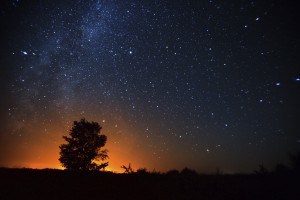 The night sky is full of bright stars, galaxies, and mystery too. Science has uncovered a lot about our solar system but we are only on the brink of understanding the sheer capacity of the universe and beyond. Adults and children both enjoy the beauty and mystical qualities of the night sky, and the more you learn about our vast solar system the more curiosities and questions are provoked. The next time you are stargazing share some of these fun facts with your kids to get them excited about astronomy at any age.
The night sky is full of bright stars, galaxies, and mystery too. Science has uncovered a lot about our solar system but we are only on the brink of understanding the sheer capacity of the universe and beyond. Adults and children both enjoy the beauty and mystical qualities of the night sky, and the more you learn about our vast solar system the more curiosities and questions are provoked. The next time you are stargazing share some of these fun facts with your kids to get them excited about astronomy at any age.
- The Milky Way is the galaxy our Solar System resides within. When the skies are dark and clear the Milky Way appears like a bright belt of stars. Its age is estimated at a whopping 13.2 billion years old.
- The Milky Way Galaxy contains an estimated 100 -400 billion stars, but these numbers are constantly changing as new stars are born and old stars die out.
- There are no pictures showing the entire scope of the Milky Way. Since earth sits inside of the Milky Way we would have to leave our own solar system in order to capture a picture of the entire thing. (reference)
- The average star is between 1 and 10 billion years old, although some stars are older than this. Large stars live shorter lives compared to smaller stars, because large stars burn through their fuel much faster. Giant stars explode into a bright supernova when they die.
- The most common type of star is a red dwarf. These stars are less than half of the sun’s mass and size. Red dwarfs burn very slowly, extending their lifespan to over 100 billion years. These stars shine less than others because they are cooler, and as they age they get dimmer until they disappear. Unlike giant stars, such as supergiants and hypergiants, small red dwarf stars do not explode. Interestingly, our sun is a red dwarf star.
- Most of the stars you see in the night sky are bigger and brighter than the sun. All of the 50 most prominent stars you can see in the sky from Earth are MUCH brighter and bigger than the sun. The dimmest of all 50 is Alpha Centauri, which is still more than 1.5 times brighter than the sun.
- When you look up at the night sky with your naked eye all of the stars appear to be the same color, but in actuality they are not. Stars have different colors depending on their temperature. The hottest stars are blue, followed by white, yellow, orange, red, and the coolest stars are brown. This can be confusing because we associate red with hot and blue with cold. Heated objects change colors as they get hotter, a glowing red object is hot but it represents the lowest heat seen under light. As something gets hotter it changes to white and then blue.
- Our sun is a “Green star,” or rather a green-blue star, as its actual color borders these two shades. Once influenced by its surroundings the sun appears to be white or yellow to us humans looking up from planet Earth.
- It takes millions of years for a star’s light to reach our eyes, meaning you are seeing stars from long ago. Looking at the night sky is like looking back in time 100,000 years.
- On a clear night you can see as far as 19 quadrillion miles up into the sky. Deneb in Cygnus is a bright star you can see in fall and winter, it is 19 quadrillion miles away.
- The sun is the closest star to Earth, but it is still located 4.24 light years away. It would take 70,000 years in our fastest spacecraft to reach the sun.
- Most stars, except for Binary star systems, prefer to live in solitude. If you were to float around outer space you’d find only one star for very long distances.
- “Twinkle, twinkle, little star…” is a real song, but stars don’t actually twinkle. As the light of a star travels into your realm of vision turbulences in Earth’s atmosphere cause disturbances in the light’s path, creating the illusion that a star is twinkling.
- If someone tells you they see 1 million stars up in the sky, you can go ahead and call them out on a lie. There are billions of stars in our solar system, but there are not enough bright stars in any given area for you to see millions of stars at once. At best, on a very clear night and far away from any light sources, you might be able to see some 2,500 stars.
Looking for more ways to get your child excited about learning? Camp Live Oak offers outdoor sleepovers beneath the glow of the stars, as well as countless other fun and educational activities. Contact us today to learn more!
Related Reading:
Best Places to Stargaze in South Florida
